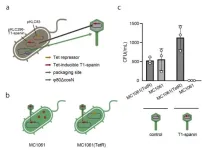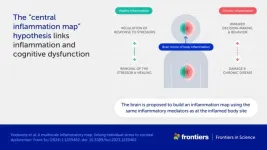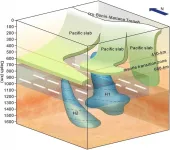(Press-News.org)
Given the worldwide prevalence of drug-resistance bacteria, the research fraternity is on the lookout for alternative bactericidal treatment approaches. In a recent study, Japanese researchers have now compared bacteriophage-derived enzymes for combating drug-resistant bacteria. Examination of T1-spanin revealed that it shows superior bactericidal activity against various strains, including E.coli. Furthermore, a novel phage-based technology effectively delivers T1-spanin genes into target bacteria. This breakthrough holds promise for the development of innovative antimicrobial agents in the future.
In the recent past, global efforts have focused on tackling emergent and unprecedent health risks, such as those posed by the COVID-19 pandemic. Nonetheless, the continued prevalence of drug-resistant bacteria presents an even greater threat to global public health. For instance, in 2019 along, drug-resistant bacteria were responsible for around 1.27 million annual deaths worldwide. Antibiotic-resistant strains now claim more lives annually, compared to HIV and malaria combined. Now, while the menace of antibiotic-resistant bacteria continues to plague the healthcare system, alternative treatment approaches, such as bacteriophage therapy, have emerged as potential treatment options. Bacteriophages, also referred to as “phages,” are viruses that specifically target and destroy bacteria, including those that have acquired resistance to antibiotics. What makes some phages particularly effective is the presence of specialized enzymes, which they use in different ways to target and kill the bacteria.
phage-derived lytic enzymes is one such type of enzyme, which can break down and kill bacteria from the inside out. Scientists have now learned to harness the power of these enzymes through bacteriophage therapy, offering a promising approach for targeting drug-resistant pathogens with high precision and efficacy.
To further explore and improve this approach of targeting antibiotic-resistance bacteria, a group of researchers from Japan, led by Satoshi Tsuneda and Kotaro Kiga conducted a study investigating T1 phage’s unique properties. Renowned for its broad spectrum activity, involving the targeted action against bacterial strains, the team aimed to understand its mechanism of action. The findings of this study were published in the BioDesignResearch on 8 January, 2024, and shed light on T1 phage’s potential role in refining bacteriophage therapy for combating drug-resistant pathogens.
To achieve this, the researchers first compared enzymes derived from the T1 phage with those from the T7 phage. They analyzed endolysins, holins, and spanins to assess their ability to kill bacteria. Endolysins are known to degrade the bacterial cell wall from the inside, causing the cell to burst open, working alongside holins to regulate their activity. “Holins work by puncturing the inner membrane of bacteria through oligomerization, with the help of a transmembrane domain. Spanins, on the other hand, act by mediating the fusion between the outer and inner membranes,” explained Prof. Tsuneda. Spanins also help break down the bacterial cell membrane. The researchers found that among the enzymes studied, those derived from the T1 phage were the most efficient at killing bacteria.
In particular, T1-spanin stood out. On attacking bacteria, viruses hijack the internal DNA machinery of bacteria, using it to make copies of themselves, similar to the mechanism observed in humans. Once enough copies have been made inside the bacterium, the cell bursts open, releasing the newly formed virus particles into the environment. Spanins, like T1-spanin, play an important role in this process, as they help break down the bacterial cell membrane, facilitating the release of the virus particles.
The T1-spanin enzyme displayed an exceptional capability to penetrate the outer defenses of nearly 120 different bacterial strains. Employing an innovative strategy, the researchers developed a novel approach to directly introduce the T1-spanin gene into target bacteria. This involved integrating the T1-spanin gene into a template virus shell. Explaining further, Prof. Tsuneda says, “Unlike natural bacteriophages, this synthetic virus is unable to reproduce itself, and by using the synthetic virus instead of the bacteriophage directly, we were able to reduce the risk of environmental contamination or any adverse effects.”
Owing to T1-spanin’s broad applicability, the method developed by the researchers in this study can be used to effectively target a wide range of bacteria, diverging from traditional approaches. While it may be difficult to imagine how something as small as a virus-derived enzyme can make a difference to the menace of antibiotic-resistant bacteria, this study shows us a ray of hope. It suggests how molecular-level innovative strategies can help address the most pressing challenges in global public health, illustrating the potential of novel strategies to combat drug-resistant pathogens and advance the development of therapeutic interventions.
###
References
Journal: BioDesign Research
Titles of original papers: Harnessing a T1 phage-derived spanin for developing phage-based antimicrobial development
DOI: 10.34133/bdr.0028
END
From anxiety about the state of the world to ongoing waves of Covid-19, the stresses we face can seem relentless and even overwhelming. Worse, these stressors can cause chronic inflammation in our bodies. Chronic inflammation is linked to serious conditions such as cardiovascular disease and cancer – and may also affect our thinking and behavior.
A new hypothesis published in Frontiers in Science suggests the negative impacts may extend far further.
“We propose that stress, ...
LAWRENCE, KANSAS — A University of Kansas study of rice paddy snakes in Southeast Asia gives key details to their diversification and natural history, adding molecular evidence that the rise of the Khorat Plateau and subsequent environmental shifts in Thailand may have altered the course of the snakes’ evolution some 2.5 million years ago. The findings were published today in the journal Scientific Reports.
Researchers say the implications could help tell the story of diversification more broadly in the region.
“This paper concerns mud snakes ...
Scientists from the Universities of Sydney and Sorbonne University have used the geological record of the deep sea to discover a connection between the orbits of Earth and Mars, past global warming patterns and the speeding up of deep ocean circulation.
They discovered a surprising 2.4-million-year cycle where deep currents wax and wane which, in turn, is linked to periods of increased solar energy and a warmer climate.
The study, published in Nature Communications, tackles the questions of how geological-timescale climate ...
If you had to estimate the number of people in a room, without counting them one-by-one, by nature you would overcount them. That’s because, simply put from a Darwinian perspective of how we have evolved, it’s better to overcount potentially harmful agents and predators than to underestimate them. This overcounting social behaviour is shown to be true in humans as well as animals. It’s certainly better to detect too many tigers (even if absent) during a jungle excursion than to miss a hungry one!
Now, EPFL neuroscientists show that if you experience hallucinations, especially ...
Researchers from China and Japan have discovered distinct characteristics of the lower mantle flow field. They investigated seismic anisotropy in the upper part of the lower mantle beneath the Philippine Sea Plate (PSP) and found that the ancient lower mantle flow field is still preserved there.
The study was published in Nature Geoscience.
The lower mantle is an important layer of the Earth and may play an important role in the evolution and material cycling of Earth's interior. It is generally believed to be not only the final destination of subducted slabs, ...
*EMBARGOED UNTIL TUESDAY, MARCH 12, AT 6 A.M. ET
Age-related changes that cause the skin to stiffen and become less elastic may also contribute to higher rates of metastatic skin cancer in older people, according to research by investigators from the Johns Hopkins Kimmel Cancer Center.
The study, published March 12 in Nature Aging, shows that increased stiffness in aging skin increases the release of a protein called ICAM1. Increased ICAM1 levels stimulate blood vessel growth in the tumor, helping it grow. It also makes the blood vessels “leaky,” enabling tumor cells ...
Despite being scattered across more than a million square kilometres, new research has revealed that remote coral reefs across the Seychelles are closely related. Using genetic analyses and oceanographic modelling, researchers at Oxford University demonstrated for the first time that a network of ocean currents scatter significant numbers of larvae between these distant islands, acting as a ‘coral superhighway.’ These results are published today in Scientific Reports.
Dr April Burt (Department of Biology, University of Oxford, and Seychelles Islands Foundation), lead author of the study, said: ‘This discovery is very important because a key factor ...
CAMBRIDGE, MA -- Tumors can carry mutations in hundreds of different genes, and each of those genes may be mutated in different ways — some mutations simply replace one DNA nucleotide with another, while others insert or delete larger sections of DNA.
Until now, there has been no way to quickly and easily screen each of those mutations in their natural setting to see what role they may play in the development, progression, and treatment response of a tumor. Using a variant of CRISPR genome-editing known as prime editing, MIT researchers have ...
Rainforest seedlings are more likely to survive in natural forests than in places where logging has happened – even if tree restoration projects have taken place, new research shows.
Scientists monitored over 5,000 seedlings for a year and a half in North Borneo.
They studied a landscape containing both natural forest and areas logged 30 years ago – some of which were recovering naturally, while some had been restored by methods including tree planting.
A drought had triggered “mast fruiting” across ...
More than 90% of the commercially available carotenoids are synthetically produced using chemicals. To meet the increasing demand for cost-effective natural compounds in carotenoid synthesis, researchers at Xiamen University, China, have developed an engineered S. cerevisiae yeast strain capable of selectively overproducing carotenoids. They redesigned the genomic sequence and critical pathways to optimize carotenoid production. This novel and successful research approach can be extended to other model ...










